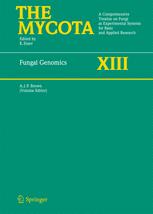

Most ebook files are in PDF format, so you can easily read them using various software such as Foxit Reader or directly on the Google Chrome browser.
Some ebook files are released by publishers in other formats such as .awz, .mobi, .epub, .fb2, etc. You may need to install specific software to read these formats on mobile/PC, such as Calibre.
Please read the tutorial at this link: https://ebookbell.com/faq
We offer FREE conversion to the popular formats you request; however, this may take some time. Therefore, right after payment, please email us, and we will try to provide the service as quickly as possible.
For some exceptional file formats or broken links (if any), please refrain from opening any disputes. Instead, email us first, and we will try to assist within a maximum of 6 hours.
EbookBell Team

0.0
0 reviewsThrough the integration of bioinformatic, genetic, transcriptomic, proteomic, metabolomic, phenomic and other massive datasets, genomics is revealing exciting new insights into fungal cell biology. The central theme of this volume is the strong impact that genomics is having upon our understanding of fungal biology, across a wide range of species, including model yeasts (such as Saccharomyces cerevisiae and Schizosaccharomyces pombe), filamentous fungi (such as Neurospora crassa and Aspergillus nidulans) and pathogenic fungi (such as Magnaporthe grisae, Candida albicans, Cryptococcus neoformans and Histoplasma capsulatum). World-renowned scientists address the following topics in these fungi: systems biology and evolution, circadian rhythms, apoptosis and stress responses, secretion, and environmental signalling networks. Particular emphasis is placed on fungal pathogenicity. Various genomic technologies are discussed, including genome-wide sequence comparisons, transcript profiling, proteomics, metabolomics and bioinformatics.